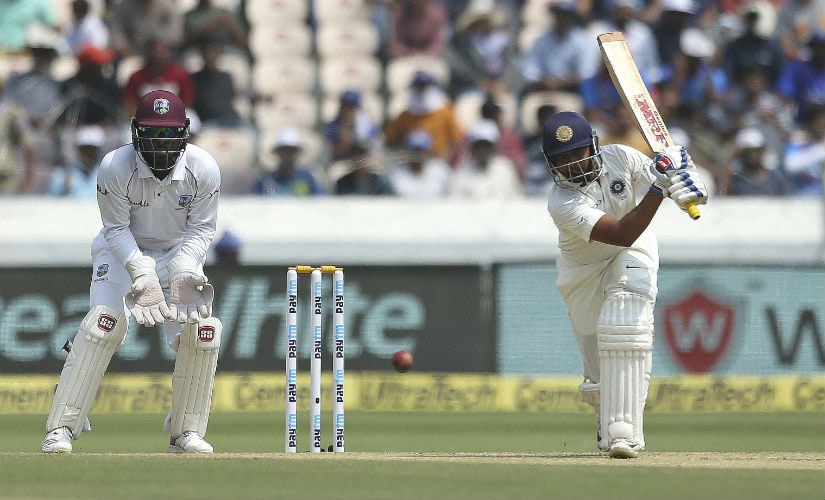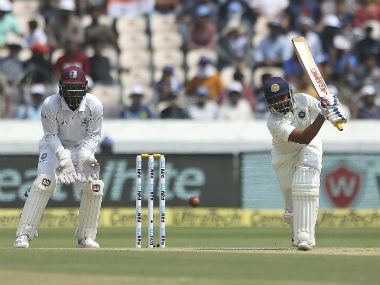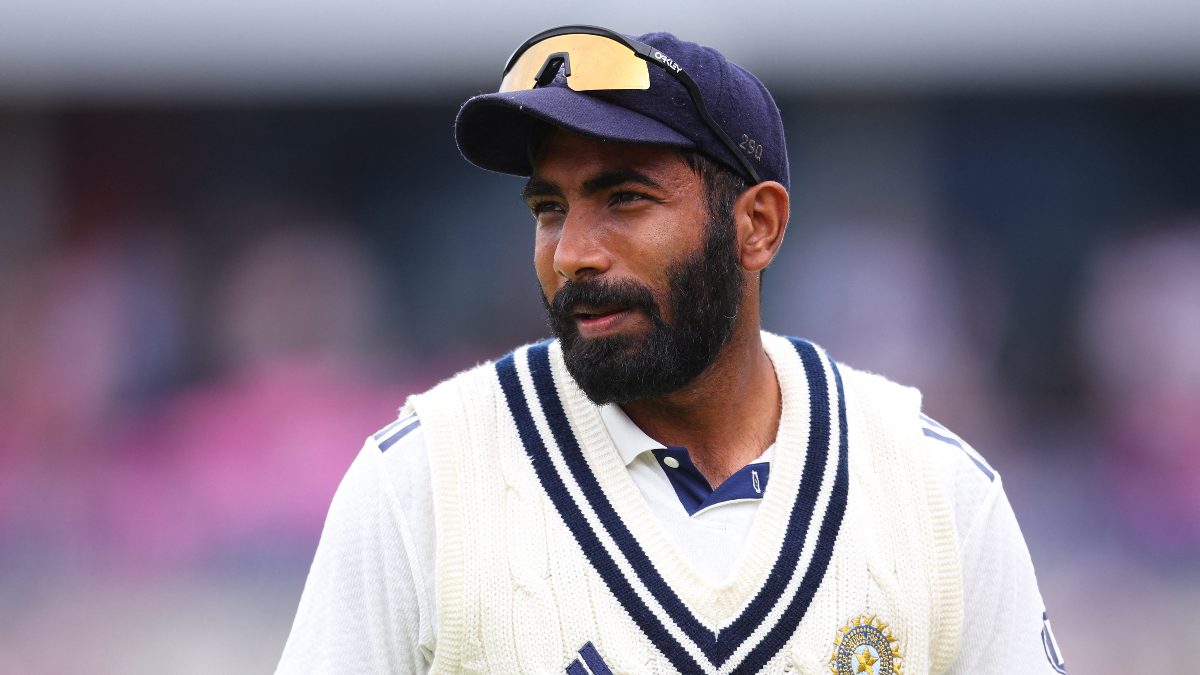For all the thousands of players across the world, there are still few batsmen who arrive in the Test arena termed a prodigy. Many have huge expectation on them but few are expected, as is Prithvi Shaw, to become the Little Master’s actual replacement. India’s tour to Australia later this year, scene of some of Tendulkar’s finest knocks, will give us a mouthwatering taste of whether he really is the true heir. Nothing can be taken away from Shaw’s breathtaking performances in his debut series against the West Indies, but it is worth recalling the fate of another of these rare prodigies to highlight the plight of the Caribbean’s current Test side. Back in 1991, Graeme Hick made his debut against the same opposition and, after stellar efforts in county cricket, had to cope with similar levels of expectation, not least as his adopted nation at the time were already in the doldrums. [caption id=“attachment_5379581” align=“alignnone” width=“825”]  Prithvi Shaw scored 237 runs at an average of 118.5 in his debut series against West Indies. AP[/caption] Zimbabwe-born Hick had six years on Shaw when he took his Test bow, having had to wait seven years to qualify for England. He also had 57 First Class tons to his name by the time he got to the middle at Headingley. Sadly, once there, he found Curtly Ambrose, Courtney Walsh, Malcolm Marshall and Patrick Paterson waiting for him and ended the series with an average of 10. In the first Test at Rajkot, Shaw walked out to face Shannon Gabriel, Keemo Paul, Sherman Lewis and Devendra Bishoo and ended his own debut series with an average of 118.5. This is not to demean the West Indies’ patchwork attack, but how Hick must have wished for this velour welcome mat laid out at the start of his own career rather than the bear pit into which he was thrown. Despite managing an ultimately respectable Test career (not least the “Kambli series” of 1992-93), Hick went on to fail against far worse attacks whereas you suspect Shaw will succeed against far better ones. Yet there were mitigating circumstances for the visitors. Lewis was making his debut and injury robbed the visitors of their captain, Jason Holder, whose all-round contribution in the second Test showed what a loss he was. They were also missing the raw talent of injured Alzarri Joseph and the experience and explosiveness of Kemar Roach, who returned home after a family bereavement. It was little surprise this attack was steam-rolled as India, with Shaw leading the charge with 134, piled up 649/9d. In the second Test, the visitors’ bowling was more virile, with Holder returning to the team to resume his Neil Wagneresque habit of dismissing batsmen, including that of Kohli, by skill but also by sheer force of will. He is a great winkler of wickets, and was well-supported by Gabriel, whose buffalo physique and ballet action benefited from a Hyderabad pitch that had a little more bounce in it than might have been expected. Odd as it may seem for an attack that conceded over 600, the West Indies’ bowling was actually the most impressive of the disciplines on display in the series. Bundled out for under 200 in both innings in Rajkot, across both Tests many of their top order batsmen played shots so rash they required a dermatologist. Again, in mitigation, many teams have come to India and collapsed in the face of a spin blitzkrieg. Indeed, the West Indies also had to contend with India’s resurgent pace resources, most potently the reverse-swing of Umesh Yadav, but the collective mindset across what is admittedly a rather young batting unit surely needs to be tuned a little more towards circumspection. Ambris and Hetmyer, both earmarked as future stars, were both guilty of recklessness, with ESPNCricinfo feeling moved to highlight the rather subjective stat that the former’s first seven Test innings included “four shots described as awful by our ball-by-ball.” Before the series, Carl Hooper, while not criticising the tournament or the young West Indian players who seek riches in it, said the Indian Premier League (IPL) was harming his nation’s Test side by siphoning off potential talents. It has certainly caused political conflicts between the West Indies Cricket Board (WICB) and established stars such as Sunil Narine, but an even more damaging effect may be if players such as Hetmyer, who recently had an exceptional Caribbean Premier League (CPL), are unable to switch off their short form bombast in the longest form. During the second Test, the TV coverage flashed up the averages of the West Indies starting XI. Only one was over 40, and while players such as Shai Hope are out of touch rather than facing issues with technique or temperament, others probably need to take a leaf out of Roston Chase’s little book of calm. Yet while the debate over T20’s effect on batting will continue, there should be no doubt that the format should improve the fielding of those who participate in it. In this regard, the West Indies, a side with plenty of well-drilled young franchisers, will be a little disappointed with their efforts. It is forgivable to be a bit ragged when the opposition has just passed the 600-mark, but frustratingly, the tourists reserved their most careless fielding for the one time in the series when they actually had India under a bit of pressure, on Day 2 in Hyderabad.
India were not exactly on the ropes at 162-4 in response to the visitors’ 311, but with an out-of-sorts Rahane and the sublime but dashing Rishabh Pant at the crease, this was the moment for the tourists to go for the jugular. Instead chances went down and a deluge of bitty misfields littered the passage of play as the two went on to rack up a game-defining 152-run partnership. As the camera panned around the field, the body language was bedraggled. The visitors knew the game had slipped, quite literally, through their fingers.
After the white-ball matches in India, the West Indies move on to play Bangladesh next in more spinning conditions, which will at least give some of their young batsmen the chance to prove they have learned from the mistakes of this series, at least in terms of approach. Chase, with a century in the second Test, will surely find himself, rightly, moved up the order from number six. His ultimately futile rearguard against Pakistan in 2017 — when his side just failed to do what Australia did in Dubai last week — was one of the most admirable that could ever be seen, but the West Indies currently need someone to stabilise innings, not save them. This is especially so when Kraigg Brathwaite, for so long the cussed rock amid the waves of incompetence around him, fails, as was the case here. He notched two tons in two matches when Bangladesh were in the Caribbean earlier this year and it is essential for this parlous middle order that he can provide a similar buffer in Chittagong and Dhaka. Four years ago, the West Indies’ last tour of India ended with a players’ strike under the agitated leadership of the ill-suited skipper Dwayne Bravo. The cruel might suggest they stopped playing even earlier on this visit and lay the blame at the door of the captain, but it seems a bit harsh to blame Jason Holder for anything given the circumstances under which he has had to do his job over the last few years. Ditto for coach Stuart Law, who is now set to leave his role to take up the reins at Middlesex. Indeed, one simple triumph of Holder’s leadership is the current relative lack of rancour between the players and board. The long-running pay dispute appears to have been settled with the result that even Chris Gayle, high priest of franchise cricket, has returned the ODI set-up. At least talks between the board and players no longer collapse even if the batting still does. This tour has gone entirely as most predicted and it seems unlikely that things will be much easier in Bangladesh, but it is not impossible, with better luck with injuries and some stern words for their raw batsmen, that Holder could manage to pull off a heist when England arrive in the Caribbean in January. Despite these two huge defeats, Brathwaite, Hope, Chase, Dowrich, Holder and Gabriel still give the West Indies at least some sort of spine. If it could somehow be fleshed out by its flashy youngsters then, with the off-field furores settled, this side could still, like Hick, go on to have some sort of success.


)

)
)
)
)
)
)
)
)



